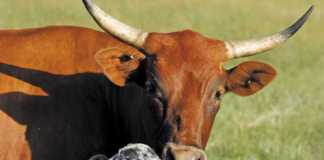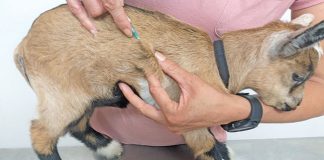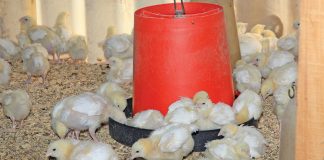With 39 suitable breeds in South Africa, farmers are spoilt for choice when it comes to beef cattle. Unfortunately, this can lead to bewilderment about choosing a breed especially with so many breed societies making similar (often unsubstantiated) claims: their cattle are well-adapted, hardy, calve easily, make good mothers, produce heavy weaners, are ideal for feedlots, and so on.
READ:Taking-the-cream-Cappuccino-men–their-cows
The truth is that there is no ‘ideal breed’. Instead, there are better or worse choices for specific conditions and purposes – the particular farming environment, production system, breeding system and market requirements.
Factors affecting choosing a breed
Environment
What is the quantity, quality and seasonal variation in the grazing? Where the pasture is sparse, of poor quality or highly variable, medium- to small-frame cows are more suitable. If the pasture yields well, of good quality and does not vary a great deal, large-frame cows may be considered. What is the climate like, particularly the heat and humidity? In an area where both are high, it’s crucial to choose a breed that can thrive under these conditions. A smooth coat and plenty of skin area, for example, is important for heat exchange.
Sunburn also needs to be considered, especially at high altitude, such as on the Highveld. Full skin pigment, especially on exposed and sensitive areas such as the eyes, will help to protect the animal. Where ticks and other external parasites are a problem, a ‘twitchable’ skin and a smooth-haired coat are best.
Production System
Large-frame or late-maturing animals are unsuitable if the progeny is to be finished off and slaughtered directly from the veld in an ox or steer production system. They put on fat at a later age and therefore take a long time to become market-ready. These animals are more suitable if their progeny is to be finished off in a feedlot.
- In a cross-breeding system, small- to medium-frame cows and large-frame bulls can produce larger-frame calves. However, as will be seen, the appropriate frame type of replacement heifers should be kept in mind.
- In a pure breeding system, medium- to small-frame cows are more suitable.
- In a rotational cross-breeding system, where some heifers are kept for replacement, medium- to small-frame cows are best.
- In a terminal cross-breeding system, where all offspring are sold, it is optimal to breed medium- or even small-frame cows to large-frame bulls to maximise the slaughter value. Nonetheless, calving ease remains a risk with smaller cows, depending on their breed and age. It is certainly not advisable to breed small-frame heifers to large-frame bulls.
Where cross-breeding systems are applied, it’s also important that the breeds be chosen to obtain the maximum benefit of heterosis (hybrid vigour) and combination of desirable traits. Generally speaking, maximum hybrid vigour is obtained by crossing breed types that are unrelated, such as Bos indicus or Sanga, with British or Continental breeds. Cross-breeding will give the stockman an advantage in the improved first-cross (F1) females as these have higher fertility and higher milk production.
Market requirements
In the South African market, A-class carcasses of 240kg to 250kg are preferred and obtain the highest price per kilogram. The market generally discriminates against A-class carcasses that are too large. Preferred size A-class carcasses with the desirable fat cover (classes A2 and A3) are obtained from medium-framed animals. With B-class carcasses (obtained from oxen/bullocks rounded off on the veld), carcass size is not as important, but, as already noted, large-frame or late-maturing animals are unsuitable because they reach the desirable fat cover at a relatively high age.
Meat quality – especially tenderness, the number one quality measure for the South African consumer – is increasingly important in the marketplace. Tenderness is critical, especially with branded beef, and there are significant genetic differences in this regard between breeds, particularly between breed types.
Other Factors
Considerations when choosing a breed include:
- Affordability of breeding animals (especially bulls) in the breed.
- Availability and reliability of performance test data and breeding values in the breed.
- Average performance of the breed with regard to the traits for your specific circumstances and needs.
- Size of the genetic pool (number of animals) and the variation in the breed.
- Availability and quality of breeding bulls in the ecological area.
- Availability of semen for AI.
- Docility of the breed.
Finally, although it may sound illogical, it is important when choosing a breed that you like. Just as we are drawn to certain people because we simply like them – not just for having certain attributes – so choosing a breed of cattle has to go beyond a list of pros and cons. It would be very tedious indeed to spend years with a cattle breed that you dislike!
Classification of beef breeds in SA |
For more information (origin, characteristics, photographs and performance data) on beef cattle breeds in South Africa, as well as articles on aspects of beef cattle breeding, consult Beef Breeding in South Africa (2nd edition, 2010) published by the Agricultural Research Council. |
Leslie Bergh is a senior researcher, Beef Cattle Recording and Improvement, at the Agricultural Research Council’s Animal Production Institute, in Irene. Contact him on 012 672 9145 or email [email protected].













